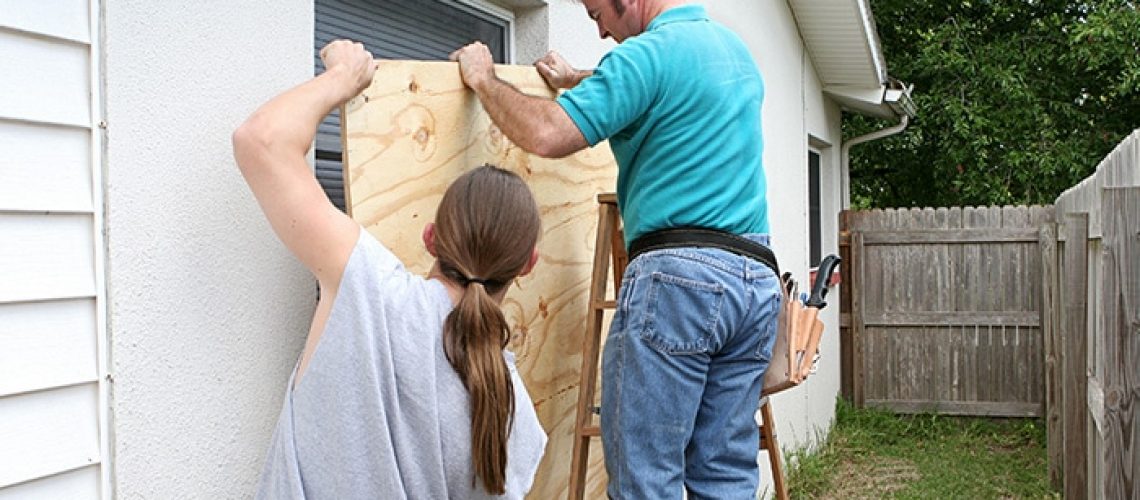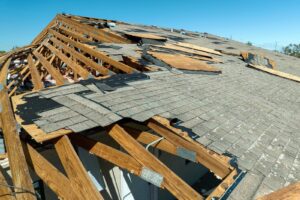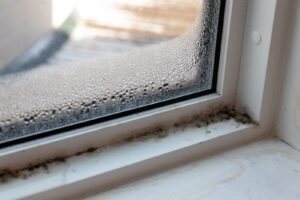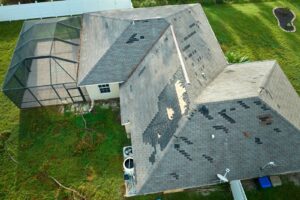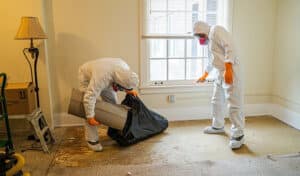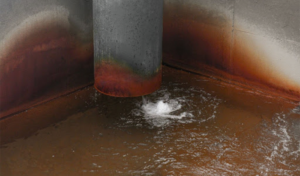It’s essential to prepare for a hurricane, even if you don’t live in an area where they often strike. A hurricane can be on the horizon in the blink of an eye and easily cause widespread devastation. How prepared you are will determine how quickly you can recover from the aftermath of the hurricane.
Today’s blog is all about preparing for a hurricane. We’ll cover what you can do right now to prepare, respond to the hurricane as it’s happening, and how to recover after the hurricane has done its damage.
Keep reading to learn more!
What Is A Hurricane?
A hurricane is a massive storm system that forms over ocean water and often moves toward land. You can expect windy, rainy, stormy conditions with lots of coastal and inland flooding, rip currents, and tornadoes. Hurricanes are powerful, deadly storms.
A hurricane can injure and kill its victims through drowning, heavy winds, and flying debris. Hurricanes damage and destroy homes, buildings, and roads. There are usually power, water, and gas outages, making it harder to get around or access what you need. Hurricanes also pollute water, making it necessary to boil water for cooking or drinking.
Does it sound awful?
It is.
We hope it’s something you never have to worry about, but we want you to be prepared, so you won’t be caught off guard or wind up in a tough situation if a hurricane hits.
How You Can Prepare Today
Even though it could be months or years before a hurricane strikes, there are steps you can take to prepare today.
- You can register for local alerts. Many local governments offer text alerts for emergencies.
- Have an emergency evacuation plan; this includes knowing your evacuation route, where you’ll go, and packing a go-bag to keep with you during the emergency. You can find evacuation routes on the FEMA app.
- Ensure you have plenty of emergency supplies (more on that below).
- Prepare your home for a hurricane; install sewer backflow valves and anchoring fuel tanks. Check to see what your insurance covers.
- Purchase a safe to protect important documents.
How You Can Respond During The Hurricane
You’ll receive emergency notifications from your local authorities. It’s critical that you follow their guidance to stay safe during the storm. Keep in mind that that guidance can change as officials monitor the hurricane. As the storm evolves, so will your response.
It might be tempting to stay in your home, but it’s essential to evacuate if you’re asked. Grab your go-bag and evacuate. Avoid walking near windows, and don’t seek shelter upstairs. The lower levels of any home or building will provide safer refuge during the hurricane. The only exception to this is if there’s flooding.
Call 911 if you find yourself in an emergency during a hurricane. However, remember that emergency first responders will be bombarded with calls, so they might guide you to resolve the situation on your own, or you might have to wait a while for help to come.
Preparing Your Go-Bag
We’ve mentioned packing and grabbing your go-bag a couple of times. Your go-bag should contain everything you need to respond to an emergency, but it shouldn’t include any unnecessary items, as that would make your bag heavier than you want it to be.
We recommend packing the following supplies:
- Medical supplies, including prescription and over-the-counter medications, epi-pens, etc.
- Tools that will keep you safe, including a first aid kit, flares, jumper cables, a wool blanket, a change of clothes, matches, flashlights, multi-purpose tools, and a whistle
- A three-day supply of non-perishable food and water
- Hygiene products like wet wipes and hand sanitizer
- Protective gear like warm clothes, closed-toed shoes, and gloves
- Any irreplaceable items that you’d be heartbroken to lose in a storm
Having your go-bag already packed will ease the stress and trauma of the hurricane, even if only a little bit. You won’t have to spend valuable time scrambling to collect what you need. You can simply grab your go-bag and evacuate/get to safety.
Prepare Your Home
Preparing your home for a hurricane is your best bet to still having a house after a storm has done its damage. It’s a good idea to protect your home against wind and flooding.
High Winds
To protect your home from high winds, we recommend reinforcing it to strengthen it against the storm’s violence. You can also create a safe room or a storm shelter. If you do the latter, make sure you follow FEMA’s ICC 500 criteria to keep yourself and your family safe.
You can protect the outside of your home by bringing in loose objects that could become storm debris. Examples include your patio furniture, garbage cans, and bicycles. If it’s not safe to bring inside—like a gas grill or propane tank—do your best to secure it to the ground. It’s also a good idea to trim the trees around your house, so branches can’t fall and damage your home.
Flood
To protect your home from flooding, clean out your gutters and drains; install a water alarm and sump pumps; install check valves; get materials like plywood, plastic sheeting, and sandbags; and protect your heating and air systems.
How to Respond After the Hurricane
If you evacuated, stay where you are until local officials tell you where to go. If you didn’t evacuate, stay in your home until it’s safe to leave — this could be a while, so you should have non-perishable food and water while you hang tight. Don’t rush out your front door the moment you can; that’s how some people are injured or killed in a hurricane.
Avoid walking through floodwater or an uninspected building or using electrical equipment. There could be dangerous debris under the water that you can’t see. A seemingly safe building could collapse on you. And using electricity could shock you if there’s nearby water or electrical damage from the storm.
Restoremasters Can Help
Did a hurricane damage your home? Even after preparing for a hurricane, your home can still get damaged. We’re sorry your home isn’t in the condition it once was! But the good news is that Restoremasters can restore your home. We specialize in water, storm, and mold damage, all of which you might need in a hurricane’s aftermath.
Restoremasters is located in Sandy, Utah, and services most of northern Utah. You can call us at 801.938.8654 or through the contact form on our website. Please don’t hesitate to reach out to us if your home needs repairs. We’ll take good care of you.

